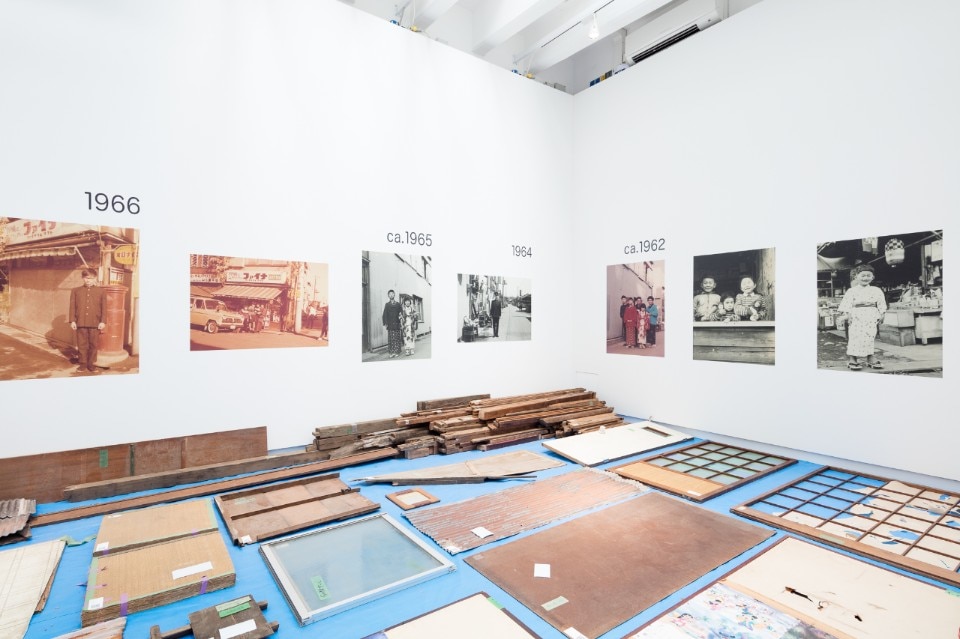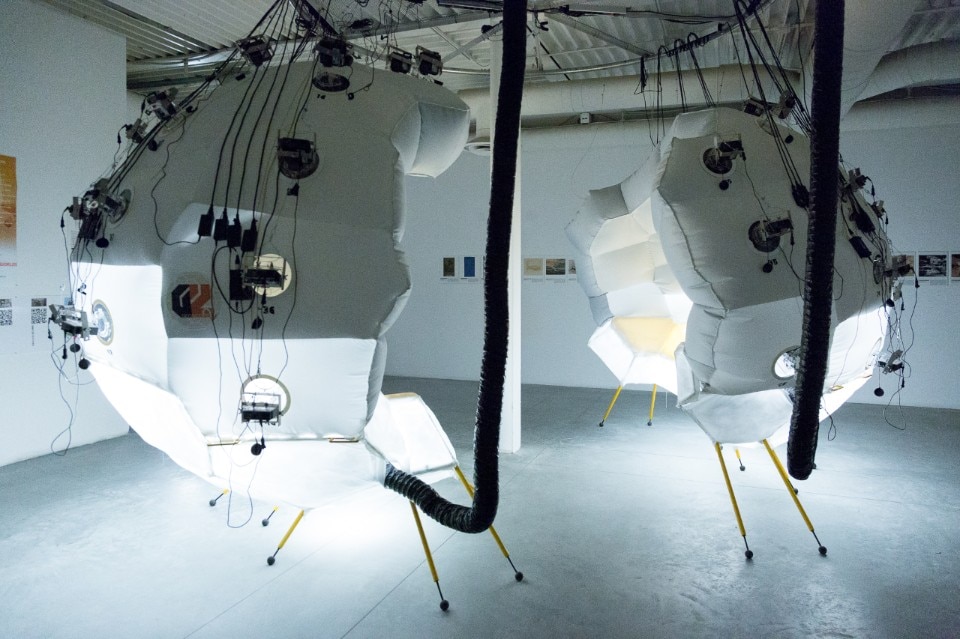Starting from the ambitious title set by the MIT militant curator, “How will we live together?” – admitting that we will actually want to do so – the prospects are not the brightest. High is the risk to cast prophecies destined to be confuted or, if true, not to be listened to, therefore cursing those who pronounced them. “Uncertainty” – the title of the Spanish pavilion – certainly is the most appropriate term to describe the current state of architecture. The Spanish pavilion's project analyses and frames – on a sadly way too defiladed and not very visible panel, and beyond the same old temptation of a para-artistic installation – the complex and articulated roles and functions of the architect and architecture in Spain. Such a thing is accomplished with a modest yet useful frame of analysis that narrates a profession under profound mutations, where the same mass of architects increases, differentiating the areas of specialisation – from formation to new jobs –, in a society that shouts its ambition to be increasingly green and less localised, pandemic permitting.
Themes with installations in which the architects haven’t been truly persuasive. In fact, the works of the artists hosted inside the architecture exhibition are more effective and confident...
The plethora of themes proposed by the curator are distinctively “on trend” and rather complex: at the core is the frailty of the Earth, between (few) apocalyptic dystopias and (many) technological utopias. The increasingly low resources of the planet, its geographical and demographic mutations, the migratory streams, the pervasiveness of networks, a bit of a pandemic, the Earth of the post-human, the hypertrophy of the technological promises: themes, many themes, with installations in which, we can say, the architects haven’t been truly persuasive. In fact, the works of the artists hosted inside the architecture exhibition are more effective and confident with the themes (above all Aerocene, already exhibited on Tomàs Saraceno’s “green air balloons”).

Apart from a few rare cases, architecture is missing and it is to be found in sporadic, nearly intimist highlights. Among these is the small and modest exhibition by Rafael Moneo hosted in the Stirling pavilion; the architecture models built in the Belgium pavilion, the drawings and the models (not renders) of the Earth Stations by Michele De Lucchi, the Uzbekistan pavilion, for the first time in Venice, with the project “Mahalla: Urban Rural Living”, representations of a research on specific models of rural and intimate living and of actual proximity of local communities; the painting collection on how “we do not live together” hosted by Chile; the project on the impossible anastylosis of a Japanese house dismantled and transported to Venice with all of its components and the memories of those who inhabited it; Patrick Berger’s magic birdhouse. While the sick Western society still looks for healing in technology, some Chinese and Asian researches, still intimately belonging to the subject of architecture, questions themselves on how to avoid to repeat the disasters of Western modernism. Among these stands out the noteworthy work by Meng Fanhao (+Studio) that moves on the narrow border between vernacular nostalgia and man-sized contemporaneity by building a settlement in the shape of a rural village.
However, the lack of focus on humans and their needs, overwhelmed by the fideism for hard science, for the technique and its marketing, perhaps is one of the most evident aspects of this Biennale, and, maybe, one of the reasons behind the loss of relevance of architecture in the times we are living. The curatorial project of the Austrian pavilion succeeds in capturing this issue. In the “Platform urbanism” project they state: “Architects, urbanists, local authorities, citizens, are rapidly being excluded from designing the living spaces of the future (and present ones too). They have been replaced by developers of platforms that disintegrate the conventional forms of spaces and take upon the global role of uber-powers of planning.” A “dark valley”...(“Uncanny Valley”, Anna Wiener).
.jpg.foto.rmedium.jpg)
The collage of stratified images of landscapes, frames and shreds of architectures and urban life – reminiscent of the apocalyptic figures of Jeronimus Bosch – is a plastic and unsettling representation of this issue. From Jeronimus Bosch to the birdhouses, we find ourselves immersed in a dimension of baroque Middle Ages. Walking through the Corderie and the Central pavilion, the impression is that of living within a new Middle Age of technology. Nothing about the future we were promised. It is all about miniaturists, artisans, alchemists with their stills, won over by pure technophilic subjugation rather than by a wished philotechnic ambition. Some of the experiments, with their unsettling shapes put on display, are reminiscent of – more or less consciously – nostalgic experiences, own of the organic modernism of avant-garde visions already implemented in the second half of the former century and clearly still not updated.
Walking through the Corderie and the Central pavilion, the impression is that of living within a new Middle Age of technology. It is all about miniaturists, artisans, alchemists with their stills, won over by pure technophilic subjugation rather than by a wished philotechnic ambition.
This approach to technology is the expression of the dominant area of cultural influence of a precise context of export that is the hyper-technological model of MIT and of its epigone universities. Under observation is the more and more pervasive role of technology in our lives, however we believe that a renovated humanistic approach to the issue is a necessary resource, to find and investigate.
.jpg.foto.rmedium.jpg)
It is no doubt true that Vitruvius argued that architects “must know astronomy if they want to build roofs,” however in the awkward attempt to imitate or chase the truths of astronomers, biologists, ecologists, sociologists, geographers, economists, the risk highlighted by this Biennale is that architecture will be less and less useful to society. If this prospect will turn into reality, architecture won’t be no longer able to affirm its still valid dominion consisting – like in a few of the studies showcased – in the ability to project spaces old and new to inhabit better and better over time. The architect of today is no longer an “archi-tekton”, hence the prime creator, but a figure competent in the project activity, and within the increasingly complex processes of material transformation of the environment we live in. Today, architects/designers are part of circular system in which they’re no longer at the centre of the circumference, but within it, together with other figures who mix and interact with each other.
If they will be able to understand their new role of cooperation alongside other competences – which does not mean necessarily taking control – maybe they will be able to go back being useful figures for society. If it is true that the task of the architect has always been that of giving shape – “substances of things hoped for” – to the ongoing transformations of the physical space inhabited, from the house to the city, such a dominion could still result like the operative perspective on which to invest. The biggest challenge is the consequences this consideration could have on the theme of the education to the project. After all, it is evident that the traditionalist model centred upon the organisation of the knowledge nurtured from the idealistic matrix that labelled techno-scientific theories as “pseudoscience” has, oddly enough, determined the side-effect of hyperspecialisation of today. This model is no longer adequate and it calls for a profound rethinking of the formative projects so to obtain a more incisive culture of the project in our society. However, we’ll leave this topic up for debate in future challenges.
Opening Image: Central pavilion at the 17. Venice Architecture Biennale. Photo Giulia di Lenarda


